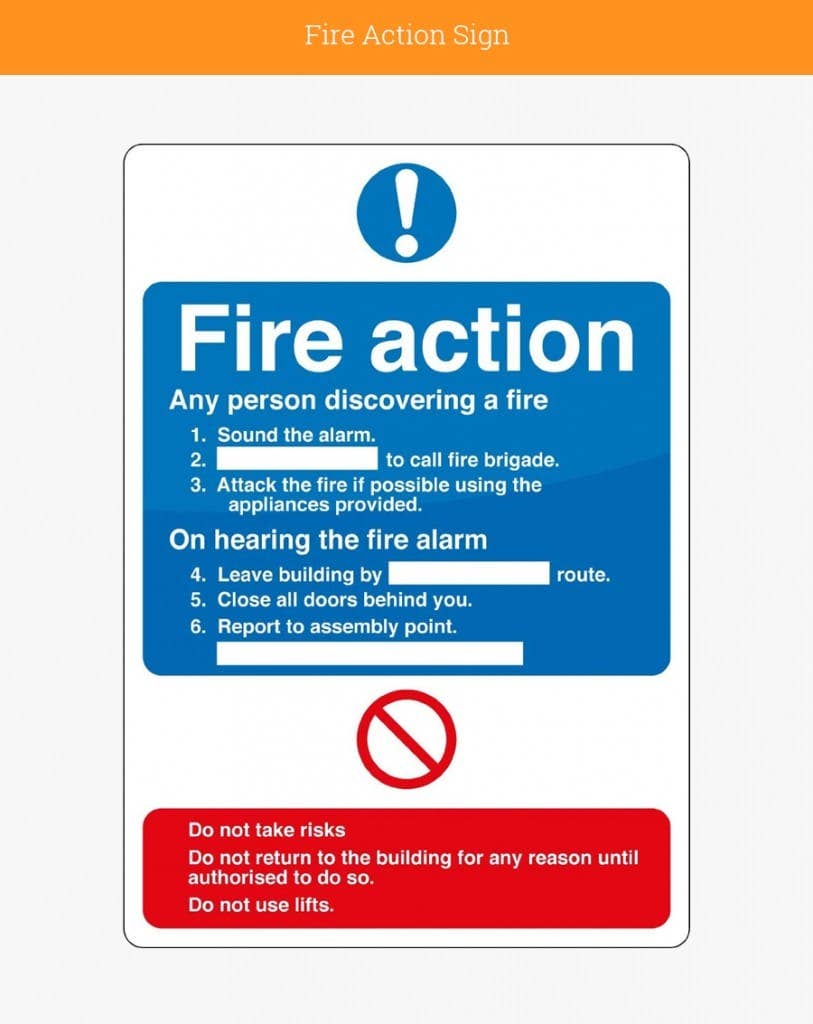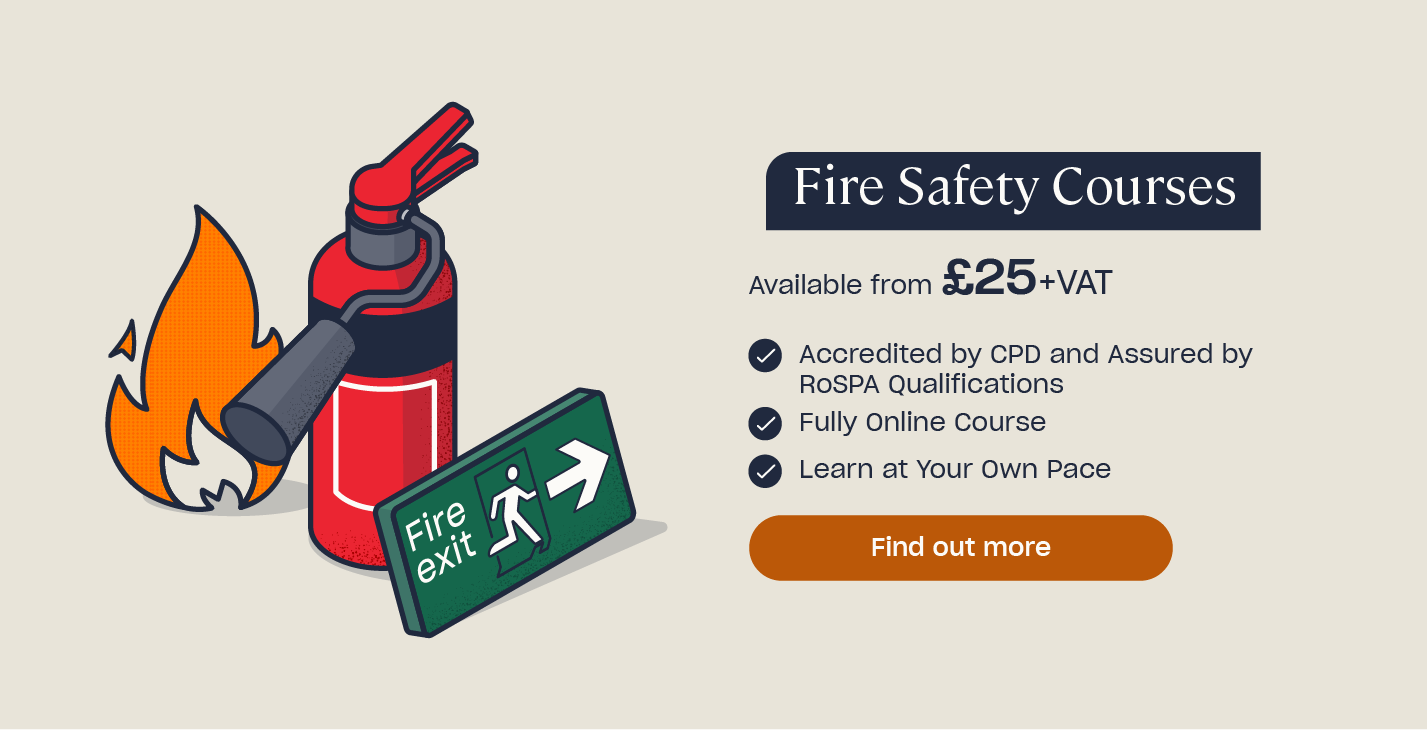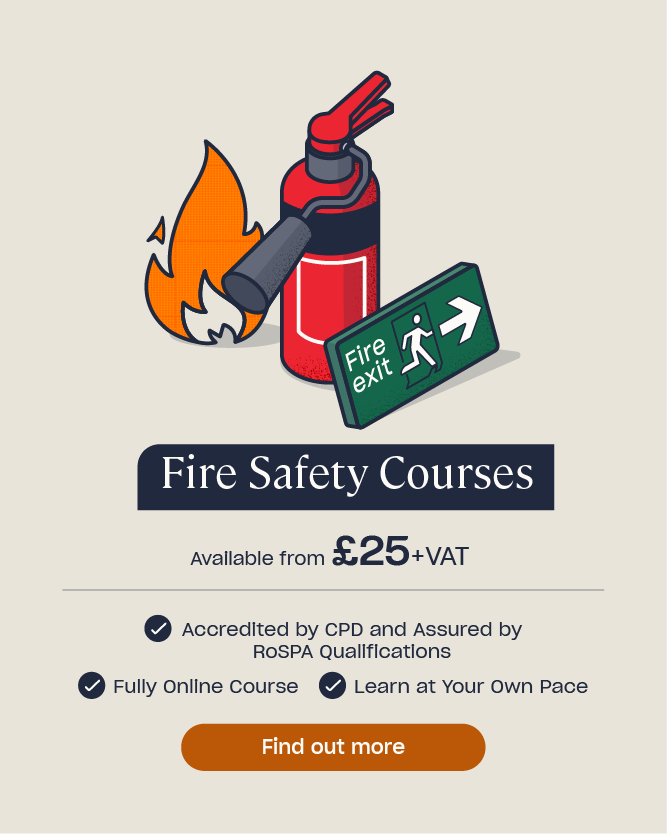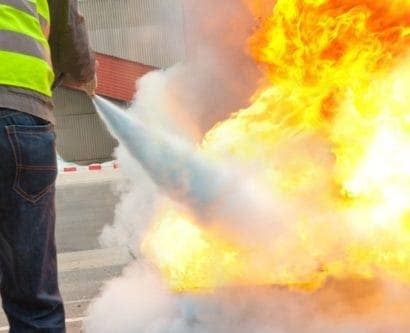Top 10 Fire Safety Tips In The Workplace
Workplace fires can be catastrophic for any business, no matter their size, status or location. According to UK Government statistics, around 13,000 fires are recorded in work premises and other non-residential buildings in England each year. Many businesses will never fully recover from a fire, so prevention is an absolute necessity.
Workplace Fire Safety Tips
Have a look at these 10 fire safety tips we’ve put together for you. They cover the key areas you must target for preventing fire or enabling a swift, safe evacuation should one start.
1. Install fire detection systems.
This is a legal requirement of all businesses. Some alarms may trigger automatically, but if they are manual be sure to teach employees how to operate them.
2. Prepare an emergency plan.
This should detail what employees must do if they discover a fire, the types of warning systems in place, and evacuation procedures.
3. Create fire escape routes.
They must take people to a safe place, have clear signs, and be well lit. Plan your fire escape routes in accordance with the local fire authority to ensure they are effective.

4. Designate a fire warden.
Your workplace should have one or more people in charge of monitoring fire safety and assisting with evacuations in the event of a fire. These people are known as fire wardens. They should receive training in fire safety awareness and what their role entails, as well as practical training in how to use fire-fighting equipment.
5. Know your fire extinguishers.
Make sure everyone in charge of fire safety understand the different types of fire extinguishers available. You should have ones most suitable for the fire your business is at risk of, e.g. carbon dioxide extinguishers in offices. Store them in appropriate places and ensure there is a sufficient amount (1 for every 200 square metres).
6. Install emergency lighting.
All emergency routes and exits must be well lit. Include lighting at each door, corridor, change of direction and floor level, staircase, and next to fire-fighting equipment and alarms. Be sure to test emergency lighting regularly.
7. Check fire safety signs.
Are they clear and suitable for those with poor vision or whose first language is not English? All fire safety signs should contain pictures so anyone can understand them at a glance. Ensure they are well lit so they can be seen in an emergency, even if the power goes out.

8. Train your employees in fire safety.
The training you provide to your employees should explain how raise the alarm, who the fire wardens are, where the escape routes are, what your evacuation procedures are, and where the assembly point is located. Without this knowledge, fire emergencies have the potential to become even more serious.
Need a Course?
Our Fire Safety Training Course is suitable for anyone at any level, no matter what industry you work in, from employees to managers and full-time to part-time staff. It teaches you about the fire risks in work premises and what safety measures should be in place to control them.
9. Hold regular fire drills.
Practice your fire evacuation procedures at least annually to ensure all employees know what to do and where to go. Carry out a fire drill sooner if any major changes are made to evacuation routes.
10. Promote good housekeeping.
Don’t keep flammable materials, e.g. cardboard boxes, for longer than necessary. Remove and recycle them on a regular basis. Avoid overloading plug sockets, and be sure to store electrical equipment safely to minimise deterioration.
Further resources:
- Fire Safety Rules and Regulations in the Workplace
- Fire Safety Quiz
- Information about the Fire Triangle & Tetrahedron
- Hotel Fire Safety Guide for Managers
- Fire Risk Assessment Quiz
- What Are the Key Differences Between Flammable and Combustible Materials?
- Fire Door Safety: What are the Requirements?
- Fire Risk Assessment for the Hospitality Industry
- Fire Safety Training









